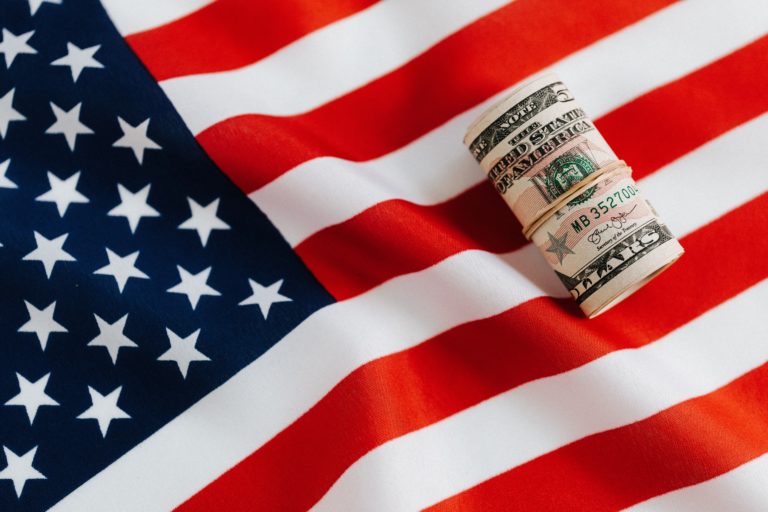The EB-5 Investor Visa
If you are a knowledgeable international investor, and if you have been seeking to put your resources to work in the United States, you probably already know that attractive investment opportunities are abundant in every region of the country.
Through the EB-5 investor visa program, the United States government permits international investors to enter, live, and work in the U.S. with their families if their investment is expected to boost the U.S. economy. In return for their investment, international investors and their immediate families are issued visas, and as the terms of the EB-5 program are met, international investors and their families quickly become eligible to acquire green cards.
The EB-5 investor visa significantly differs from the E-2 investor visa. The EB-5 establishes a path to lawful permanent residency while the E-2 visa is strictly a non-immigrant visa. All qualified international investors may apply for the EB-5 visa, while only investors from “treaty partner nations” (nations with which the U.S. maintains a treaty of commerce) may apply for the E-2 visa.
The basic requirements of the EB-5 investor visa program are outlined and discussed below, but international investors can and should address their specific questions and concerns regarding the EB-5 investor visa program to a good immigration lawyer in the United States.
From anywhere in the world, you can arrange to speak with an experienced Dublin immigration attorney, learn more about the EB-5 investor visa program, have your questions answered and concerns addressed, and begin the process of applying for an EB-5 investor visa.
A Boost to the Economy
It’s taken years for most international investors to find out about the EB-5 program and its benefits. In 2003, thirteen years after the program was established, only 65 EB-5 visas were issued to international investors. But in 2008, when banks started refusing to lend in response to the recession, the EB-5 program offered developers substantial and immediately available investment capital. Today the EB-5 investor visa program brings approximately $1.8 billion into the U.S. annually.
The Immigration Act of 1990 specifically created the EB-5 investor visa program to permit the entry into the United States of qualified international investors as lawful permanent residents. The EB-5 visa is offered to those who have invested or are investing at least $1 million in a U.S.-based commercial enterprise that will create ten or more full-time U.S.-based jobs.
In a designated high-unemployment region – what the EB-5 program calls a “Targeted Employment Area” or “TEA” – the minimum investment is only $500,000. The EB-5 investor visa program was created to boost the U.S. economy through the infusion of capital and the creation of jobs by offering international investors the benefits of lawful permanent residence in the United States.
A Benefit to Everyone
When the EB-5 program was first implemented in 1990, international investors were required to create a wholly new business enterprise in the United States. The rules have been amended since that time. Today, provided that a sufficient number of new jobs are created, EB-5 investments may also be made into already-established U.S.-based businesses.
Most EB-5 program participants invest through the EB-5 Regional Center Program. Regional centers are private-sector groups that pool investor funds to develop resorts, hotels, and similar projects.
Investments made through the EB-5 program are a benefit to everyone. For example, international EB-5 investors are helping to bring prosperity back to one of San Francisco’s most impoverished neighborhoods. The 775-acre, $8 billion “Shipyards” project in San Francisco’s Candlestick Point and Hunters Point neighborhoods was delayed for years by insufficient funding. The Shipyards project is now set to build 12,000 new homes, office buildings, a retail center, and hundreds of acres of parks.
Other plans include community health facilities, an arts center, and refurbished studio space at reasonable rates for the neighborhood’s many artists. David Satterfield, speaking for Lennar Urban, the developer of Shipyards, told China Daily that “The U.S. financial crisis from 2007 to 2010 slowed the project and EB-5 money has helped get it re-started.”
In Miami, EB-5 investors have helped to construct university buildings, restaurants, and a number of other successful enterprises. Other projects that have received EB-5 Regional Center funding include the Hudson Yards Redevelopment Project in Manhattan, the City Point Project in Brooklyn, and the SLS Las Vegas Hotel & Casino.
From the years 2005 through 2013, the EB-5 investor visa program generated more than $5 billion in direct investment into the United States. The program gives investors from around the world the opportunity to live and work in the United States with their families and to pursue the American Dream. It gives developers and business owners in the United States a way to obtain the investment funds they need to launch new enterprises and bring sluggish businesses and entire communities back to life.
Workers in the U.S. get more jobs and job opportunities. Everybody wins. A return rate of about eight percent is typical, but what many international investors care about far more is the ability to live and work in the United States and to acquire visas and eventually green cards for their spouses and their dependent minor children.
Targeted Employment Areas
For the international investors who participate in the EB-5 investor visa program, placing an investment in a designated Targeted Employment Area or TEA reduces the minimum investment amount to $500,000. An EB-5 investment must be set in a rural region or in a location with a high unemployment rate in order to receive the TEA designation, and not in what the U.S. Office of Management and Budget classifies as a “metropolitan statistical area.”
What that means is that a rural area project cannot be located adjacent to a municipality with a population of 20,000 or above. To qualify as a Targeted Employment Area or TEA, the location must have an unemployment rate of at least 150 percent of the national U.S. average.
To acquire a TEA designation, an EB-5 investor visa candidate must offer documentation proving the project is set in a rural area or a high unemployment area. Several forms of evidence are accepted. Let one of our experienced U.S. immigration attorneys at Shihab Burke, LLC, Attorneys At Law help you compile that evidence and provide you with other important insights and advice. Nineteen U.S. states make available a list of TEAs that have already been identified and designated, but you are not limited to those states or regions. TEA designations are also still approved on an individual basis.
Obtaining an EB-5 visa and finding the investment opportunity that’s right for you can take some time and determination, but international investors in the EB-5 investor visa program have learned that the rewards are very much worth their efforts and patience. An experienced immigration lawyer in the United States can help qualified international investors acquire EB-5 visas, help them to locate ideal investment opportunities, and address any of an international investor’s other questions or concerns.
When an international investor’s EB-5 visa petition is approved, the investor and his or her dependents are granted conditional permanent residence valid for two years. Within the ninety-day period before the conditional permanent residence expires, the investor must submit evidence documenting that the full required investment has been made and that ten jobs have been maintained, created, or will be created within a reasonable period of time.
Changes May Be Coming
At the end of a year of uncertainty, Congress in December extended the life of the EB-5 investor visa program – with no changes – through September 2016 as part of the omnibus spending bill. Congress came close several times in 2015 to making changes in the EB-5 program, and several suggestions were offered, but at the end of the year, the EB-5 program was renewed “as is.” Lawmakers now have until September 2016 to consider a number of proposals, including but not limited to:
- Increasing the available number of EB-5 visas, now capped at 10,000 per year.
- Amending the definition of a Targeted Employment Area.
- Increasing the minimum investment amount from $500,000 to $800,000.
- Establishing stiffer penalties for non-compliance with any terms of the EB-5 program.
The number and variety of EB-5-related ideas and proposals that surfaced in 2015 proves how important the EB-5 investor visa program is to the U.S. and the U.S. economy. International investors can best take advantage of the EB-5 visa program and the many great investment opportunities in the United States by working from the start alongside an experienced U.S. immigration lawyer who routinely helps investors and other business professionals dealing with immigration issues.
International investors should also understand that it may take some time to obtain an EB-5 visa. With only 10,000 EB-5 visas available each year, it’s imperative to initiate the application process as early as possible. The program reached capacity for the first time in August 2014 when the State Department stopped issuing EB-5 visas until the beginning of the next fiscal year, October 2014. The EB-5 visa is a superlative path to lawful permanent residency in the United States for those international investors with the will, the resources, and the vision to pursue it.
UPDATE: As of November 21, 2019, the EB-5 investor program has been updated to include the following increased investment minimums:
- The standard minimum investment amount has increased to $1.8 million (from $1 million) to account for inflation.
- The minimum investment in a TEA has increased to $900,000 (from $500,000) to account for inflation.
Obtain legal immigration advice that you can trust, and learn more about the EB-5 investor visa program – or begin the application process now – by consulting with an experienced Dublin immigration attorney. Let the law office of Shihab Burke, LLC, Attorneys At Law help you make the EB-5 process easy to navigate.
Contact us today! We are here to help.



